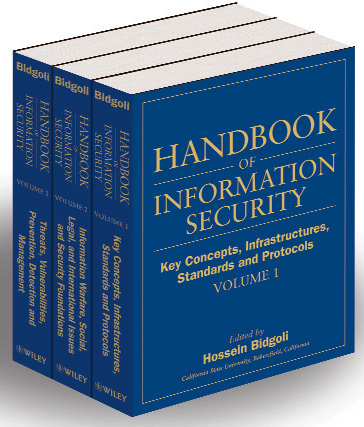| Home | ||
| Services | ||
| OpenVMS | ||
| Windows | ||
| Printers | ||
| PostScript | ||
| Architectures | ||
| Networks | ||
| Embedded Systems | ||
| Presentations | ||
| Publications | ||
| Handbook of InfoSec | ||
| Articles | ||
| Bookstore | ||

|
Handbook of Information Security Hossein Bidgoli, Editor
| |||||
|
Electronic mail was the first “killer app” on the Internet. Since the advent of the first Internet electronic mail in 1972, the networked world has dramatically changed, yet the philosophies and protocols used for transferring electronic mail have proven highly resilient, albeit with a high potential for abuse. Internet electronic mail, presently defined by the Internet Engineering Task Force’s RFCs (Requests for Comment) 2821 and 2822, may be the most familiar but is far from the only thread in the tapestry of electronic mail development. Electronic mail evolved from simple, noncomputerized origins. Computer-based messaging systems, originally implemented for the limited goal of transmitting simple text messages within isolated systems, have increased in scale and scope to become an interconnected network that includes innumerable heterogeneous systems spanning the globe. In terms of content, the messages have expanded from simple text memos to multimegabyte messages containing all types of data, including executable files, patches, and multimedia. Techniques have also been developed utilizing encryption to ensure the authenticity, integrity, and confidentiality of messages. Today’s leading challenges to Internet electronic mail security come from privacy, integrity, and misuse concerns, particularly the mass transmission of unsolicited commercial messages, which often use forged headers. The standard baseline Internet electronic mail architecture does not address security issues, yet does not exclude security precautions both en route and at terminal points. |
||||||
|
Hewlett-Packard’s OpenVMS is the best choice of operating systems for reliability, security, scalability, and clustering technology. Now known as OpenVMS, VAX/VMS was originally released as the operating system for Digital Equipment Corporation’s VAX-11/780 computer system. OpenVMS is a highly functional, world-class system with a more than 25-year history. It evolved from a 32-bit system on purpose-designed hardware to the 64-bit proprietary Alpha RISC processor and then to the 64-bit Intel Itanium. Presently, OpenVMS supports all three processors. OpenVMS defined the term “clustering” in 1983 and is still regarded as the gold standard in cluster technology. Industry research firms regularly cite OpenVMS as a leader in uptime, security, and, as a result, low total cost of ownership (TCO). OpenVMS provides a rich development and management environment, allowing configurations ranging from highly secure data center scale systems to individual workstations with less demanding security requirements. |
||||||